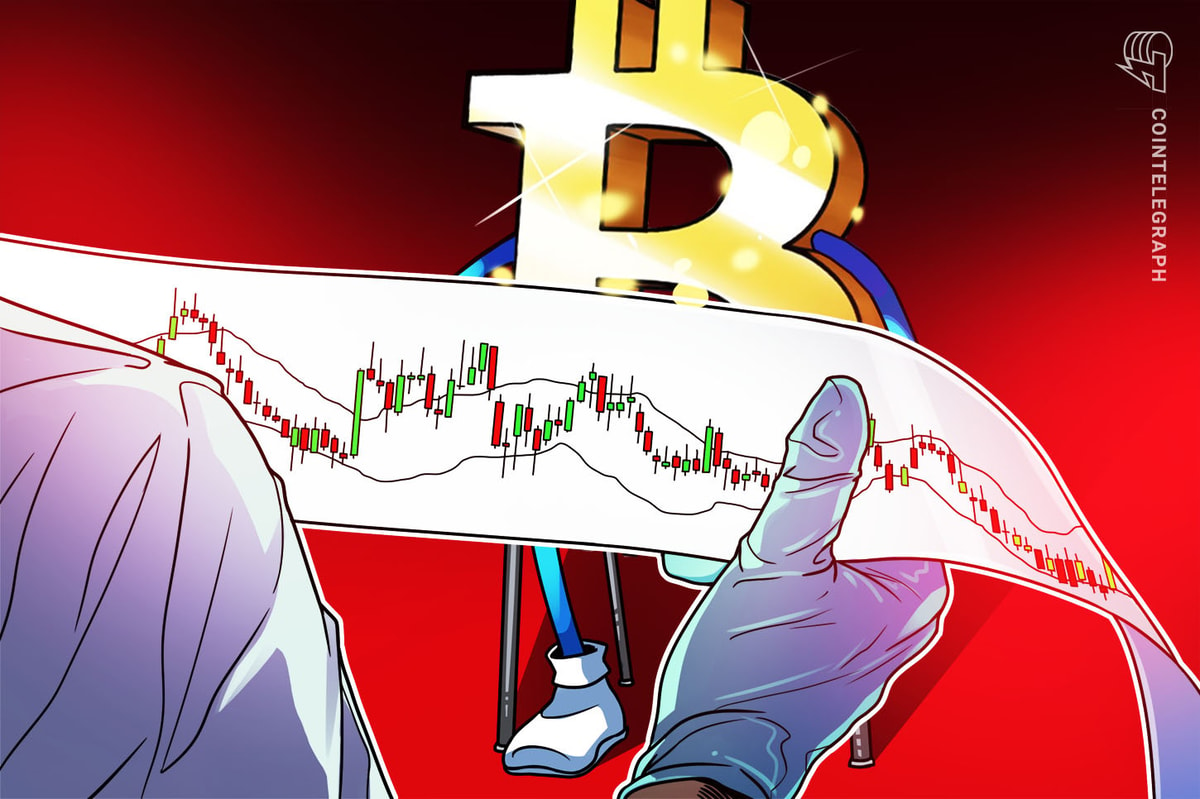Ether (ETH) price experienced a 20% increase from March 3 to March 13, culminating in a double top formation near $4,100. Following the second rejection, ETH underwent a 20% correction, testing the $3,200 support on March 19. Analysts suggest that the initial rally was fueled by overly leveraged long positions.
Ether’s bullish momentum faded following the forced liquidation of $375 million in ETH futures over the past week, but the question remains whether this is sufficient for Ether to stop the correction and potentially kick-start a bull run again.
Ether’s price lagged competitors during the crash
Ether's downturn was more pronounced than the broader cryptocurrency market's performance, which saw its market capitalization peak at $2.77 trillion on March 14, stabilizing around $2.35 trillion, a 15.5% drop over five days. Ether's relative performance suffered due to Bitcoin's (BTC) 12% weekly drop, Solana's (SOL) 21% increase, and Binance Coin's (BNB) slight 2% decrease during the same timeframe.
Interestingly, Solana faced challenges with increased fees and failed transactions as the network struggled to manage the surge in activity, mainly driven by a significant interest in new memecoins. Cointelegraph reported that traders injected approximately $100 million into new Solana memecoins within just three days.
The Ethereum network underwent its most significant upgrade in over a year on March 13, coinciding with Ether's price peak for the cycle in 2024. The hard fork greatly reduced transaction fees for layer-2 networks like Arbitrum, Optimism, and Base, thus enhancing Ethereum's scalability. The introduction of data blobs also improved the network's data-handling capabilities.
This upgrade should be viewed as a success, evidenced by the surge in activity on layer-2 solutions to an all-time high, averaging 122 transactions per second (TPS) over the last two days, according to L2beat. This represents a 31% increase from the previous week and is more than eight times the base layer capacity of Ethereum at 15 TPS.
Despite the anticipation surrounding Ethereum's network upgrades, the base layer gas fees have remained a significant issue, with the average cost hovering around $12 on March 18, according to BitInfoCharts. This situation highlights the continuing appeal of alternative platforms like Solana and Avalanche (AVAX). Notably, these were among the few cryptocurrencies in the top 20 to see gains over the past week.
Ether futures indicate moderate bullishness despite ETH’s price crash
On a positive note, the 20% correction in Ether since March 13 has led to the ETH perpetual contract funding rate approaching nearly zero. This indicates a balance in demand between those holding long positions and those shorting, suggesting a market equilibrium.

The funding rate's dip to its lowest level in three weeks at 0.014% per 8-hour period, equivalent to 0.3% over seven days, starkly contrasts with the previous week. Then, buyers were facing a 1.2% fee to keep their positions open for a week. This significant shift indicates a cooling off from the previously heated buying enthusiasm.
Related: Why is Ethereum (ETH) price down today?
To understand whether professional traders have also changed to a neutral stance, one should analyze the monthly futures. Typically, in such markets, futures trade at a 5% to 10% premium over spot exchanges, reflecting the cost of carrying the investment until settlement.

Ether's futures have been trading at a 22% premium, an unusually high premium that suggests an excessive demand for long positions, possibly driven by optimism regarding the upcoming decisions on Ethereum's spot exchange-traded funds (ETFs). Remarkably, this optimism persists unabated, even after Ether's price correction to $3,200 on March 19, which could be seen as a bullish signal amidst the broader market recalibration.
This article does not contain investment advice or recommendations. Every investment and trading move involves risk, and readers should conduct their own research when making a decision.










